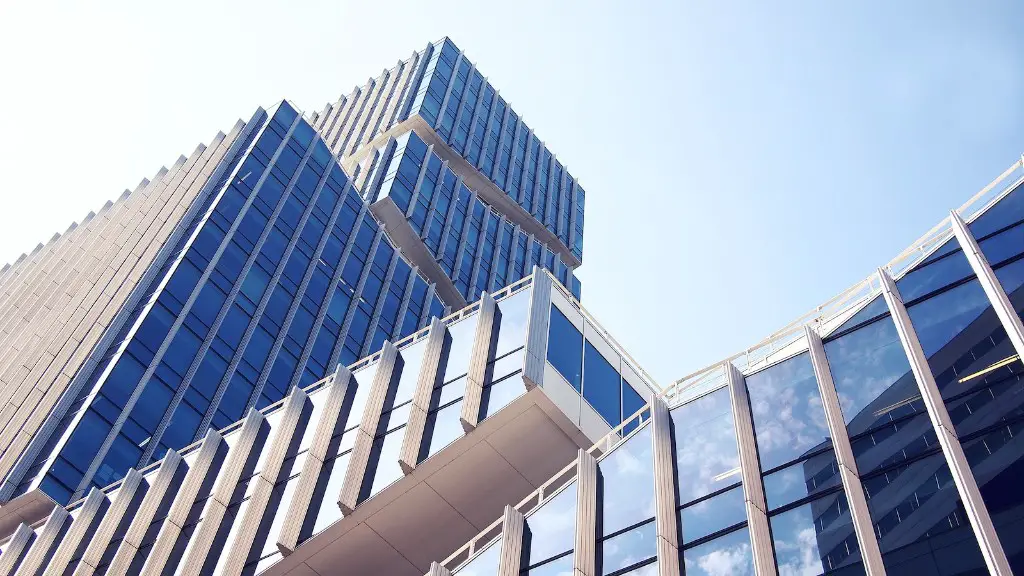The Open Group Architecture Framework (TOGAF) is a framework for enterprise architecture (EA). EA is the process of designing, planning, implementing, and governing an enterprise information technology architecture. The goal of EA is to ensure that an enterprise’s IT architecture is well-aligned with its business strategy. TOGAF is a vendor-neutral, open framework that can be used by any organization to develop its own enterprise architecture.
The Open Group Architecture Framework (TOGAF) is a framework for enterprise architecture (EA). EA is the process of translating business goals and objectives into a coherent plan that can be used to guide the investment and development of IT resources. The TOGAF framework provides a structured approach to EA that can be used by organizations to develop their own Enterprise Architecture.
What is meant by open group architecture framework?
TOGAF is a comprehensive and detailed framework for developing an enterprise architecture. It provides a detailed method and supporting tools for developing an enterprise architecture that can be used within any organization. TOGAF is freely available for use by any organization wishing to develop an enterprise architecture.
The Open Group Architecture Framework (TOGAF) is a framework for enterprise architecture. The framework is designed to help organizations in the development and use of enterprise architecture. TOGAF provides a high-level view of how an enterprise can be structured and how enterprise architecture can be used to support the enterprise.
What are the 4 pillars of TOGAF
The four architectural domains of TOGAF are: Business, Application, Data, and Technical.
The Business domain contains the processes and policies that define how the business operates.
The Application domain contains the software applications that support the business processes.
The Data domain contains the data that is used by the applications.
The Technical domain contains the hardware and software infrastructure that supports the applications.
The TOGAF framework is composed of several core components which work together to provide a comprehensive approach to enterprise architecture. The reference models provide a standard set of concepts and terminology that can be used to describe enterprise architectures. The enterprise continuum is a tool for managing different types of architectures within an organization. The architecture content framework provides a standard set of templates and artefacts for documenting architectures. The architecture capability framework provides a set of best practices for developing and operating an architecture function. The ADM guidelines and techniques provide a detailed methodology for carrying out architecture development.
What are examples of open groups?
Open groups are a great way to get exposure to different types of OCD or social anxiety. Some examples of open groups are goals’ groups specifically designed to help people with OCD exposure to different types of OCD, such as contamination exposures, harm-related exposures, sensorimotor OCD, or Pure-O symptoms. Social anxiety open groups can also be very helpful, providing exposure to different types of social situations, such as conversation practice, mistake practice, or assertiveness practice.
The TOGAF Architecture Development Method (ADM) is a step-by-step approach for developing an enterprise architecture. The TOGAF ADM cycle consists of the following four phases:
1) Preliminary: Framework and Principle
2) Architecture Vision
3) Business Architecture
4) Architecture Information Systems
5) Technology Architecture
6) Opportunities and Solutions
7) Migration Planning
8) Implementation Governance
9) Architecture Change Management
What is TOGAF in a nutshell?
TOGAF is a very popular Enterprise Architecture Framework that is focused on Strategic Planning, Execution and Governance of an IT Vision. It is also known for coming up with a roadmap for Technology Transformation. The Preliminary Phase of TOGAF involves selecting the right Architecture Framework (TOGAF TRM or III-RM) that forms the basis of the foundation architecture.
TOGAF is a framework that helps organizations design an IT infrastructure that is adaptable to their specific needs. TOGAF professionals are trained to communicate with various department heads and help design and implement an IT strategy quickly and effectively. By using TOGAF, organizations can save time and money by having a well-designed IT infrastructure in place.
Is TOGAF a framework or methodology
The TOGAF Standard is a great way to improve business efficiency in your organization. It is a proven Enterprise Architecture methodology and framework that is used by the world’s leading organizations. This standard will help you to improve your business processes, communication and collaboration within your organization. Implementing the TOGAF Standard will help you to achieve your business goals and objectives.
Design is all around us, and it can be used to make our world more interesting andordered. The seven principles of design are a good framework for understanding howto create pleasing, effective designs.
Balance is the distribution of visual weight in a design. It can be symmetrical,asymmetrical, or radial.
Rhythm is the repetition or alternation of elements in a design. It can be regularor irregular, rhythmic or harmonious.
Emphasis is the focus of attention in a design. It can be created through color,size, shape, or placement.
Proportion and scale are the relationships between the sizes of elements in a design. They can be used to create visual interest and a sense of order.
Movement is the way the eye travels through a design. It can be created by the placement of elements, lines, and shapes.
Contrast is the difference between two elements in a design. It can be created through color, size, shape, or placement.
Unity is the feeling of harmony in a design. It can be created through color,size, shape, or placement.
What is the difference between TOGAF and ITIL?
TOGAF is a comprehensive architecture framework that provides guidance for enterprise architecture. ITIL is a set of best practices for IT Service Management that helps IT organizations manage resources from a business perspective.
TOGAF is a framework for enterprise architecture that was first published in 1995. It is maintained by The Open Group, and has been updated several times over the years.
The latest version, TOGAF 9.1, was released in 2016. While TOGAF is not perfect, it is still a relevant tool for enterprise architects today. However, some parts of it are outdated, and it seems that The Open Group has a new strategy regarding TOGAF and its other certifications, frameworks, and standards in mind.
What are the 4 components within the framework
A strategic framework provides a roadmap for an organization to achieve its long-term goals. It is important to have a clear vision and mission statement to define what the organization wants to achieve. The time frame for achieving the goals should be realistic, and the objectives should be specific and measurable.
The Open Group’s Architecture Framework, TOGAF, is a globally recognized standard for developing enterprise architecture. TOGAF provides a detailed method and a set of supporting tools for developing an enterprise architecture. TOGAF is the short form of The Open Group Architecture Framework.
How many phases are there in TOGAF?
1. Pre-Architecture phase: In this phase, the architectural team is formed and the preliminary requirements are gathered.
2. Architecture phase: In this phase, the team develops the conceptual, logical, and physical models of the enterprise architecture.
3. Business Architecture phase: In this phase, the team develops the business architecture, which includes the business goals, business processes, and business capabilities.
4. Information Systems Architecture phase: In this phase, the team develops the information systems architecture, which includes the data architecture and the application architecture.
5. Technology Architecture phase: In this phase, the team develops the technology architecture, which includes the hardware, software, and networking components.
6. Implementation Governance phase: In this phase, the team develops the implementation governance, which includes the organizational structures, policies, and procedures.
7. Transition Planning phase: In this phase, the team develops the transition plan, which includes the schedule, resources, and risks.
8. Deployment phase: In this phase, the enterprise architecture is deployed.
9. Operations and Maintenance phase: In this phase, the team monitors and maintains the enterprise architecture.
10. Retirement phase: In this
Open groups can be defined as those in which new members may join at any time, and members can come and go throughout the life of the group. This is in contrast to closed groups, where membership is limited and members are not able to join or leave at will. Open groups can be beneficial in that they allow for flexibility and growth, but they can also be disadvantageous in that members may not have a strong commitment to the group.
Conclusion
The open group architecture framework is a standard for enterprise architecture that provides a common language for describing, analyzing, and managing the enterprise architecture.
The Open Group Architecture Framework is a systems engineering methodology for enterprise architecture. It is a framework that provides a comprehensive approach for developing, analyzing, and documenting enterprise architectures. The Open Group Architecture Framework is a valuable tool for enterprise architects and systems engineers.





